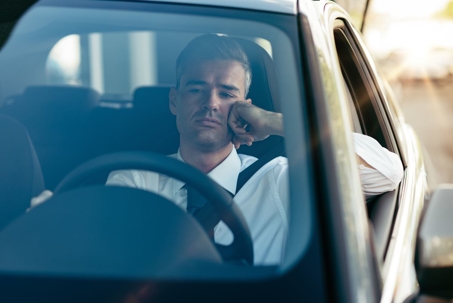Distracted driving is a complex issue that has only recently come into the public eye. While it’s common to see TV ads and PSAs warning about the dangers of driving while using a cellphone, that’s only a small part of the problem. To understand the true danger, we need to look at the three types of distracted driving.
3 Types of Distracted Driving
Most government safety organizations, including the CDC and the Pennsylvania Department of Transportation, identify three distinct types of distracted driving. Each of these is unique in their risk of causing a crash. The three types of distracted driving are:
Manual
Manual distractions are anything that takes your hands off the wheel. This could be something as simple as taking a sip of your drink or searching through radio stations. To ensure maximum control, you should keep both hands on the wheel as much as possible.
Visual
Visual distractions are anything that takes your eyes off the road. These tend to be more common than manual distractions because we’re bombarded with visual information. Whether you look at a billboard, glance at your GPS, or make eye contact with your passenger, you’re indulging a visual distraction. Difficult as it may be, you need to keep your eyes on the road and your mirrors.
Cognitive
Cognitive distractions take your mind away from the rules of the road. This type of driving distraction is the most dangerous because it pulls us out of the present moment and leaves us in a sort of reflexive autopilot. Yet this distraction is rarely discussed because it is difficult to address.
A cognitive distraction might manifest as thinking about what you’ll have for dinner, having an argument in your mind, or even imagining the source of that annoying squeak. Cognitive distractions are especially dangerous because you often don’t realize you’re distracted until you’re moments from a crash.
Triple Threats
Alone, each of these distractions slightly increases the risk of a crash. When these three types of distracted driving are focused into a single distraction, the risk of a car crash increases by 25%. These combined distractions are called “triple threats.”
Triple threats are far worse than any individual distraction because they combine the mental fog of a cognitive distraction, the unawareness of a visual distraction, and the slower reaction times of a manual distraction.
These deadly driving distractions are everywhere. To get a better idea of how triple threats impact our driving, let’s look at some common examples:
Examples of Triple Threat Driving Distractions:
Reaching Into a Bag
Visual: Finding your bag
Manual: Reaching into the bag
Cognitive: Identifying objects by their shape
Eating While Driving
Visual: Looking at food or having it in your peripheral vision
Manual: Reaching for the food and opening packaging
Cognitive: Tasting food and maneuvering packaging
Using a Cellphone
Visual: Navigating your phone’s menu and unlock screen.
Manual: Reaching for the phone or unlocking it.
Cognitive: Formulating messages or search term.
Some might argue that cellphones aren’t always a “triple threat” because you can dictate a text message from start to finish. That means there’s no visual distraction and no manual distraction. However, the truth is that formulating a text message and mentally navigating phone menus is just as distracting as using a cellphone with your hands. It’s a reduction in other distractions, but a much, much greater cognitive distraction.
While eliminating visual and manual distractions is a good start, every driver needs to understand that a wandering mind is often what separates a case of careless driving from a serious crash.
If you or someone you love suffered severe injuries at the hands of a distracted driver, we are here for you. If you'd like to discuss your case with an experienced Montgomery County personal injury attorney from Mayerson Injury Law, P.C. to evaluate your case, please send us an email or call (610) 492-7155.

